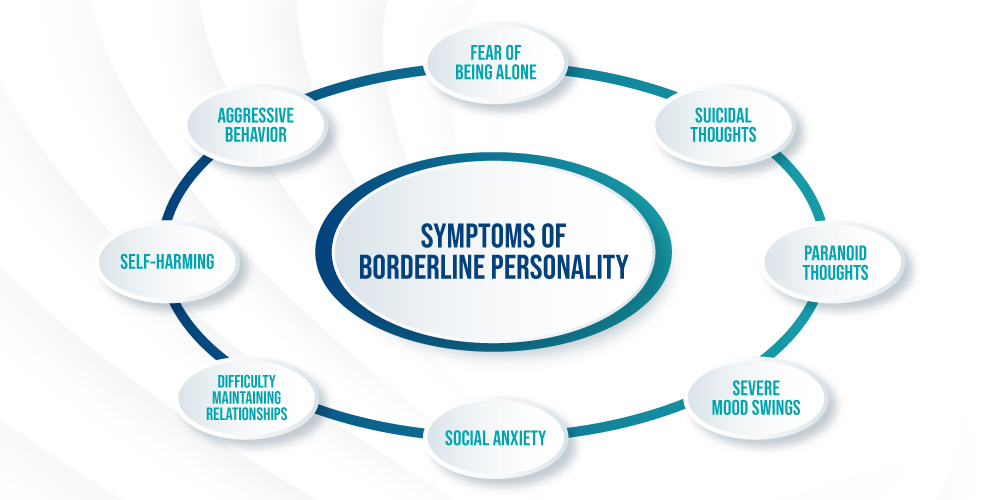Last Updated on May 16, 2024
Living with borderline personality disorder can feel like being part of a dystopian world. A world of intense emotions, shifting relationships, and the constant fear of being abandoned. If you or someone you love experiences the extreme highs and lows and the whirlwind of emotions that characterize borderline personality disorder (BPD), consider reading on. We’re going to unpack the types of BPD and shed light on how to navigate through this often-misunderstood condition.
It is noteworthy that this condition can be managed either by utilizing various medications or by participating in borderline personality disorder clinical trials conducted by clinical research organizations across Illinois and Michigan.
What is Borderline Personality Disorder?
Borderline personality disorder is a mental health condition that impacts how a person manages their emotions, relationships, and self-image. It is estimated that borderline personality disorder affects approximately 1.6% of the psychiatric population. People with BPD often experience:
- Intense Emotional Instability: Rapid and extreme mood swings, from euphoria to deep sadness or explosive anger.
- Fear of Abandonment: A fear of being rejected or being left alone.
- Unstable Relationships: Relationships that are intense, but unstable leading to idealization of one person and devaluation of the other person.
- Distorted Self-image: A poorly defined self, feeling unsure about their own identity.
- Impulsive and Self-destructive Behavior: Engaging in risky behaviors, like substance abuse, self-harm and suicidal gestures.
Types of Borderline Personality Disorder
There are 4 different types of borderline personality disorders namely:
- Impulsive Borderline Personality Disorder
- Discouraged Borderline Personality Disorder
- Self-destructive Borderline Personality Disorder
- Petulant Borderline Personality Disorder
Impulsive BPD
Individuals suffering from impulsive borderline personality disorder struggle significantly with controlling their impulses, often engaging in risky and potentially harmful behaviors. They often possess a strong desire for instant satisfaction and frequently undervalue rewards that are postponed or delayed.
Individuals with Impulsive BPD may exhibit:
- Bingeing Behaviors: It includes engaging in behaviors characterized by excessive eating and overspending.
- Risky and Self-destructive Behavior: It includes involvement in activities that pose risks such as unprotected sexual activities, excessive alcohol consumption or driving under the influence, drug use and gambling.
- Aggressive Behavior: This type of BPD leads to uncontrolled anger that can lead to yelling, breaking things, and physical violence.
Discouraged BPD
The second most important type of BPD is discouraged borderline personality disorder. Individuals with discouraged borderline disorder type are often referred to as high-functioning or quiet BPD. They exhibit a unique blend of avoidance and dependence on others. They also display high levels of loyalty and humility, sometimes to the point of clinging to those around them.
Individuals with discouraged BPD may exhibit characteristics such as:
- Identity Tied to Relationships: The identity of individuals with discouraged BPD is heavily connected with their relationships, particularly romantic ones. This deep connection means that when a close relationship ends, their world can become destabilized, and coping becomes a significant challenge.
- Fear of Abandonment: One of the defining characteristics is an intense fear of abandonment, leading to feelings of insecurity, helplessness, and self-doubt. This fear can make it difficult for them to navigate life when faced with the end of a significant relationship.
- Feeling of Depression and Powerlessness: Individuals with discouraged borderline personality disorder often grapple with feelings of depression and powerlessness. Tasks, even small ones, can feel insurmountable, leading them to seek support from others. This reliance may sometimes develop into unhealthy dependence.
- Difficulty Expressing Anger: Expressing anger is difficult for those with discouraged BPD, as it conflicts with their self-image. Consequently, they may internalize their anger, resorting to self-harm or suicidal thoughts.
Petulant BPD
Individuals suffering from petulant borderline personality disorder may experience rapid shifts between emotions transitioning from anger to sadness or sulkiness in an unpredictable manner. These fluctuations may contribute to feelings of unworthiness and a sense of being unloved. These individuals often feel a strong compulsion to manipulate or control others, leading to possessive behavior that hinders the maintenance of interpersonal relationships.
Individuals suffering from petulant BPD may exhibit different characteristics such as:
- Difficulty finding enjoyment in harmonious relationships
- Experiencing intense anger and frustration
- Regularly engaging in irrational and emotional outbursts
- Impatience in normal social situations, often with others
- Reluctance to admit wrongdoing
- Frequent display of passive-aggressive behavior
Self-destructive BPD
The type of BPD in which people become their worst enemies is termed as self-destructive borderline personality disorder. In this type of personality disorder, individuals may struggle to maintain healthy relationships and often find themselves engaging in risky behaviors. As a result, they can negatively impact their connections with loved ones.
Individuals suffering from self-destructive BPD may experience challenges that include:
- Intense feelings of self-doubt and negative self-image
- Engaging in self-harmful behaviors to manage emotional distress
- Frequent periods of depression and low mood
- Feeling a sense of bitterness or resentment
- Experiencing thoughts of suicide as a way to escape overwhelming emotions
Diagnosing the Different Types of BPD
To diagnose borderline personality disorder, your healthcare professional or a psychiatrist will:
- Inquire about your symptoms and medical background
- Discuss your family’s medical history, including mental health conditions
- Require you to complete a comprehensive questionnaire
- Conduct a thorough medical examination to eliminate other potential causes of your symptoms
Based on this, your healthcare provider may diagnose one or more types of BPD. However, it should be noted that some individuals may exhibit only the core symptoms of BPD and might not align with any of the four types mentioned above.
Treatment Approaches for Different Types of BPD
Individuals diagnosed with different types of BPD may receive medication to help manage symptoms such as anxiety and mood swings associated with the disorder.
Medications play a crucial role in reducing the likelihood of self-harm and preventing suicide. Additionally, therapeutic interventions significantly contribute to managing mental health conditions.
Explore: Novel Therapeutic Interventions for Mental Health Conditions
The approach to therapeutic treatment varies from person to person and on the specific BPD subtype:
- Treatment for Impulsive BPD: Cognitive Behavioral Therapy (CBT) and Dialectical Behavioral Therapy (DBT) are effective treatments for individuals with impulsive BPD.
- Treatment for Discouraged BPD: Psychotherapy, particularly Dialectical Behavioral Therapy (DBT), Cognitive Behavioral Therapy (CBT), and Mentalization-Based Therapy (MBT), are primary modalities for managing symptoms in individuals with discouraged BPD.
- Treatment for Petulant BPD: Dialectical Behavioral Therapy, is recommended for individuals with petulant BPD. DBT can teach one to harness skills such as emotion regulation, distress tolerance, and interpersonal skills.
- Treatment for Self-Destructive BPD: Dialectical Behavioral Therapy and Schema-Focused Therapy (SFT), a form of therapy incorporating elements of CBT, have demonstrated effectiveness in treating self-destructive BPD.
Also Read: How to Say No to Someone with Borderline Personality Disorder?
Takeaway
In conclusion, BPD encompasses various types namely Impulsive, discouraged, petulant and self-destructive. Each different type of BPD has distinct features and requires tailored treatments. With proper care and guidance, no matter what type of BPD an individual is suffering from, they can lead fulfilling lives despite the struggles.





